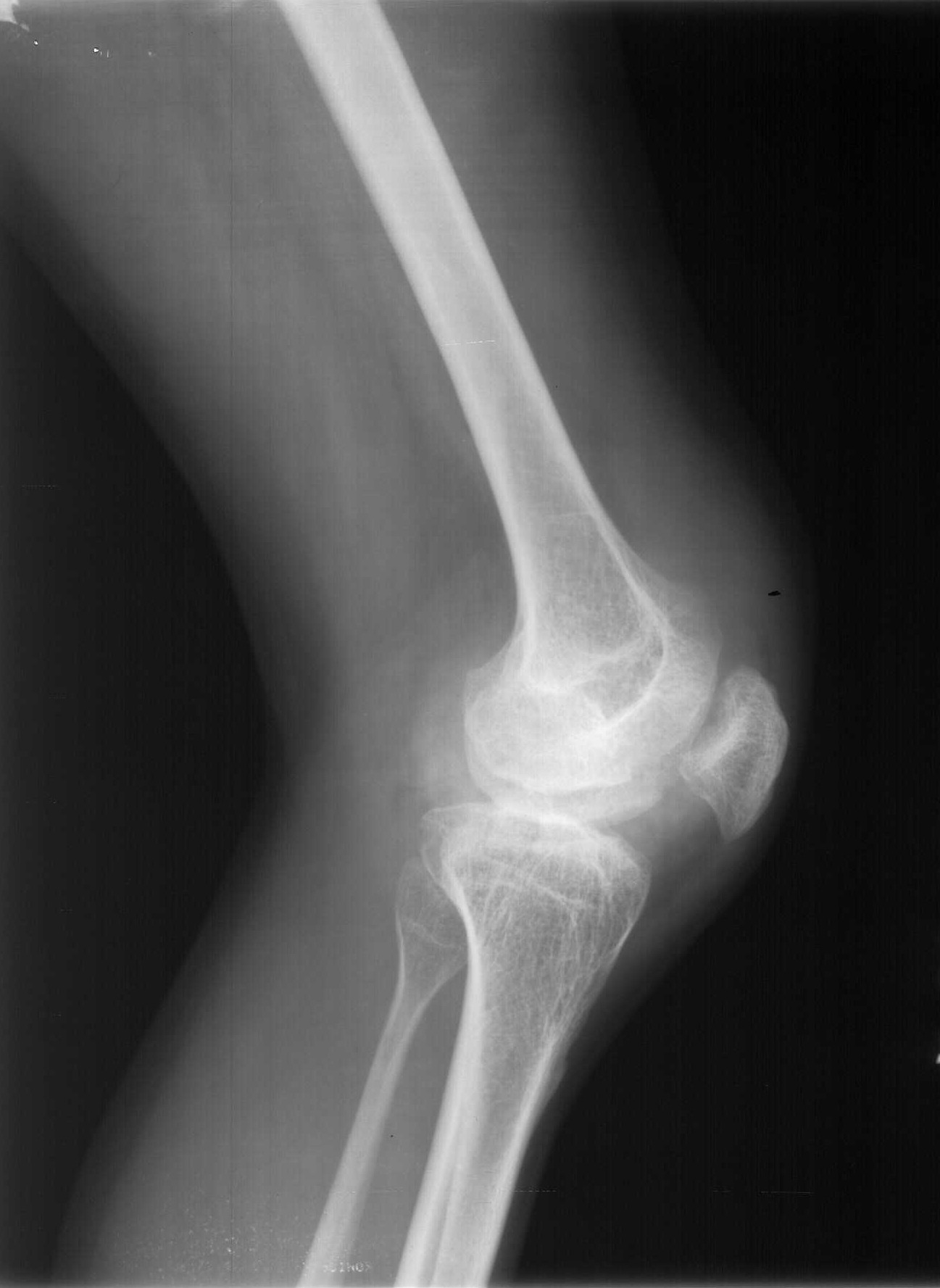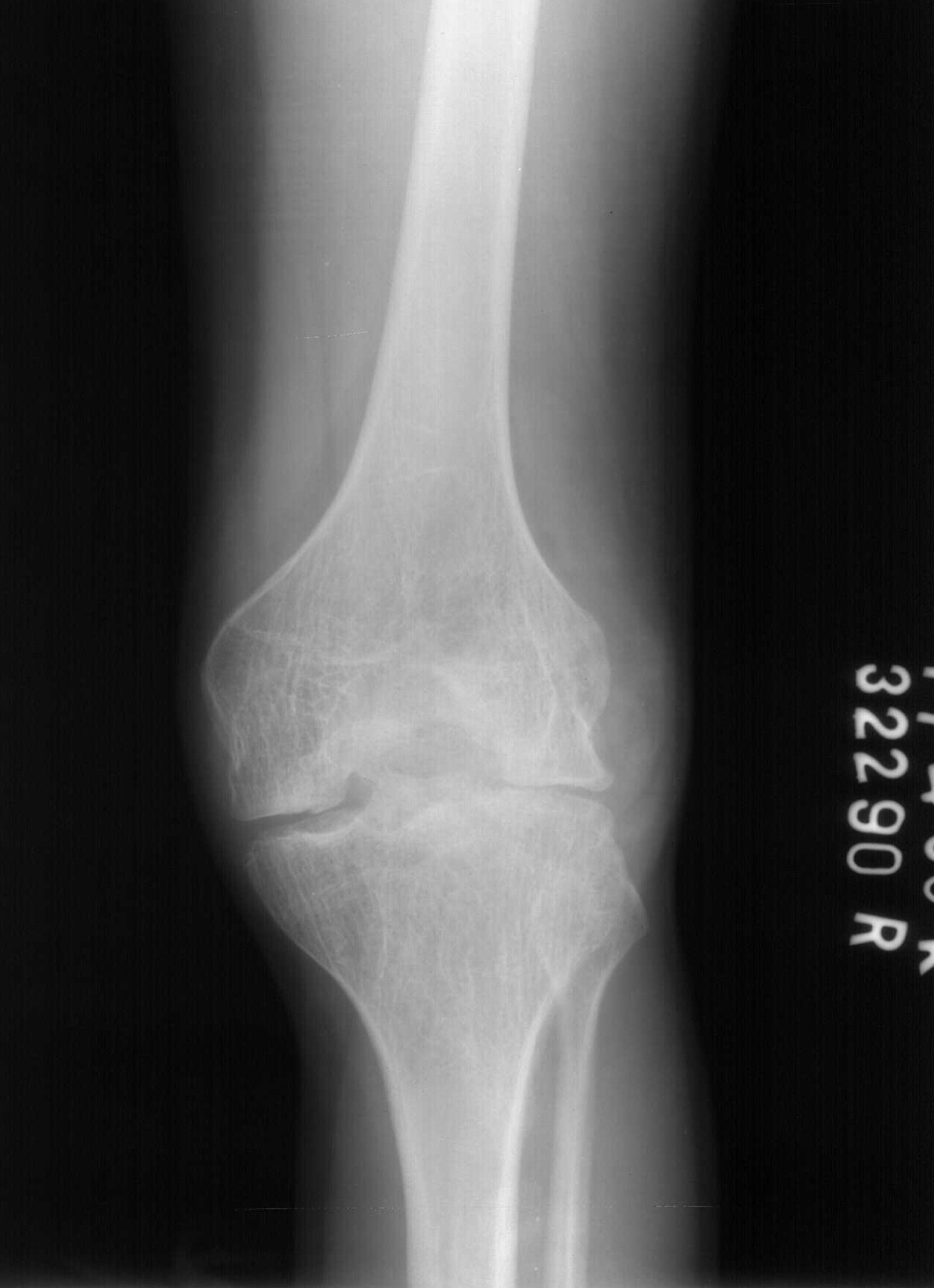Haemophilic Arthritis.
The deficiency or absence of either of 2 clotting elements—factor VIII or factor IX—leads to the clinical conditions described as hemophilia A or hemophilia B, respectively. Hemophilia B was formerly known as Christmas disease. In this disease, life-threatening bleeding into the head or the abdomen may occur at any age
People with one of these bleeding disorders are prone to have recurrent episodes of hemorrhage into the joints. Acute bleeding increases the pressure in the synovial cavity and bone marrow, which leads to severe pain and possibly osteonecrosis or a pseudotumoral mass. Intra-articular bleeding produces a direct chemical effect on the synovium, cartilage, and bone. Over time, the blood becomes deposited in the form of hemosiderin in these tissues.
Recurrent hyperemia of the joint in the growing child causes juxta-articular osteoporosis and overgrowth of the epiphysis.
Clinical Details:
Approximately 50% of patients with hemophilia develop permanent joint deformities. Pseudotumors can develop in the bone marrow, cortical bone, and soft tissues.
One common presentation is the development of uncontrollable hemorrhage after routine postnatal circumcision. In addition to bleeding into the joints, spontaneous or post-traumatic bleeding may occur in the gastrointestinal or genitourinary tracts. Subdural or intracerebral bleeding may be life threatening. Retroperitoneal bleeding may be occult and result in a significant decrease in the hematocrit level.
Hemarthrosis occurs in 75-90% of patients with hemophilia. Young children and adolescents are more likely to bleed into joints than adults are. This may be because adults are better able to protect their joints from trauma. Bleeding occurs in predictable patterns, affecting some joints more than others. The joints most commonly affected with repetitive bleeding in an individual patient are referred to as target joints. The most common target joints are the knee, ankle, and elbow.
The disease tends to be asymmetric in its involvement. Approximately 50% of patients with hemophilia develop permanent changes in the joint. These chronic changes include thick synovial deposition, richly laden with hemosiderin. The synovial masses erode the juxta-articular cartilage and the subchondral bone. Invasion into the bone substance produces intraosseous cyst formation. Bleeding into the bone may rarely produce large, vacuolated spaces referred to as intraosseous pseudotumors. Similar blood masses may occur in the cortex and the soft tissues
Knee involvement :
The knee is the classic target joint. Involvement of this joint is most commonly described in the literature and is the basis for the findings described in the Arnold-Hilgartner classification.
The chronic joint effusions in hemophilia may be denser than other effusions because of the presence of iron. Juxta-articular osteoporosis develops, especially in children, secondary to the hyperemic state. The irregular appearance of the subchondral surface is secondary to either blood directly destroying bone or to synovial intrusion.
Deeper invasion of synovium and joint fluid leads to multiple subchondral cysts. Chronic hyperemia causes overgrowth of the epiphysis and widening of the intercondylar notch in the growing child. Squaring of inferior pole of patella (seen in 20-30% of patients with hemophilia) is another form of overgrowth. A similar affect of overgrowth may be seen in children with juvenile rheumatoid arthritis (JRA). A fixed flexion deformity and painful limitation of motion are late findings on physical examination.
Arnold-Hilgartner scale
Stage Findings
0 | Normal joint
I | No skeletal abnormalities, soft-tissue swelling present
II | Osteoporosis and overgrowth of epiphysis, no cysts, no narrowing of cartilage space
III | Early subchondral bone cysts, squaring of the patella, notch of distal femur or humerus widened, preservation of cartilage space
IV | Findings of stage III, but more advanced; cartilage space narrowed
V | Fibrous joint contracture, loss of joint cartilage space, extensive enlargement of the epiphysis and substantial disorganization of joint
0 | Normal joint
I | No skeletal abnormalities, soft-tissue swelling present
II | Osteoporosis and overgrowth of epiphysis, no cysts, no narrowing of cartilage space
III | Early subchondral bone cysts, squaring of the patella, notch of distal femur or humerus widened, preservation of cartilage space
IV | Findings of stage III, but more advanced; cartilage space narrowed
V | Fibrous joint contracture, loss of joint cartilage space, extensive enlargement of the epiphysis and substantial disorganization of joint




